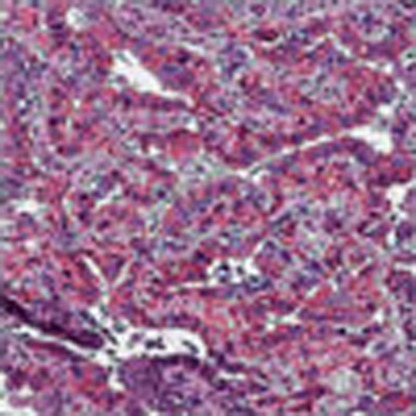- Record: found
- Abstract: found
- Article: found
Predicting non-small cell lung cancer prognosis by fully automated microscopic pathology image features

Read this article at
Abstract
Lung cancer is the most prevalent cancer worldwide, and histopathological assessment is indispensable for its diagnosis. However, human evaluation of pathology slides cannot accurately predict patients' prognoses. In this study, we obtain 2,186 haematoxylin and eosin stained histopathology whole-slide images of lung adenocarcinoma and squamous cell carcinoma patients from The Cancer Genome Atlas (TCGA), and 294 additional images from Stanford Tissue Microarray (TMA) Database. We extract 9,879 quantitative image features and use regularized machine-learning methods to select the top features and to distinguish shorter-term survivors from longer-term survivors with stage I adenocarcinoma ( P<0.003) or squamous cell carcinoma ( P=0.023) in the TCGA data set. We validate the survival prediction framework with the TMA cohort ( P<0.036 for both tumour types). Our results suggest that automatically derived image features can predict the prognosis of lung cancer patients and thereby contribute to precision oncology. Our methods are extensible to histopathology images of other organs.
Abstract
 Diagnosis of lung cancer through manual histopathology evaluation is insufficient
to predict patient survival. Here, the authors use computerized image processing to
identify diagnostically relevant image features and use these features to distinguish
lung cancer patients with different prognoses.
Diagnosis of lung cancer through manual histopathology evaluation is insufficient
to predict patient survival. Here, the authors use computerized image processing to
identify diagnostically relevant image features and use these features to distinguish
lung cancer patients with different prognoses.
Related collections
Most cited references39
- Record: found
- Abstract: found
- Article: not found
Regularization Paths for Cox's Proportional Hazards Model via Coordinate Descent.
- Record: found
- Abstract: found
- Article: not found